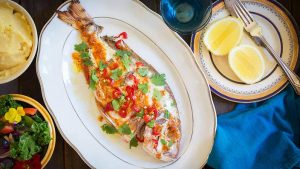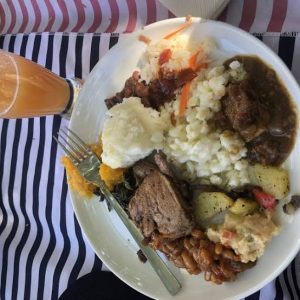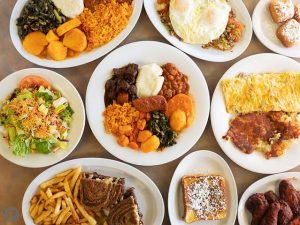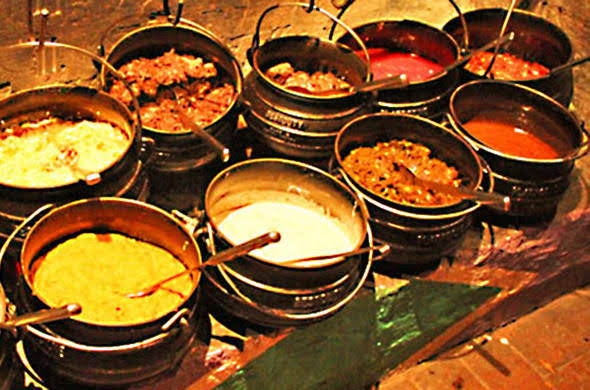In the Botswana open-air marketplaces you will find a large variety of foods. Some foods are imported from neighboring countries, but many are grown locally, utilizing irrigation techniques. Botswanans raise their own livestock, including a great quantity of high-quality beef, as well as lamb, mutton, chicken and other meats in good supply. Beef is by far the most popular of meats, with goat meat being the closest second favorite. Also integral to Botswana cuisine are the abundant River Fish.

The cuisine of Botswana is unique but also shares some characteristics with other cuisines of Southern Africa. Examples of Setswana food include pap, samp, vetkoek, bogobe and mopane worms.

A food unique to Botswana is seswaa, salted mashed-up meat. Watermelons are believed to have originated in Botswana. The other foods include morogo wa dinawa, madila and dikgobe. It makes Botswana proud to have their own meal. Most of the relish they get locally. Batswana also make home made refreshing drinks using water melon, Morula and ginger powder. At weddings, sorghum meal is usually cooked mixed with dmelon and this mixture is called Bogobe jwa lerotse. Usually the melon is pre prepared with sour milk and stored to be used whenever needed. Botswana are also good in food preservation. Among others they preserve meat by cutting it into small lengths like strings then dry it. They also fetch bean leaves, cook and dry them. It is also common among Batswana to make Mageu from leftover porridge or pap. Some tribes also preserve not very bad or rotten meat by drying it to be used as relish for a long time. Batswana value their food from time immemorial. They consider it as part of their culture.

Botswana Cuisine, while sharing plenty of culinary aspects found in other South African cuisines, is still quite unique. Botswana cuisine is often referred to as ‘Setswana food,’ named after the predominant language spoken in Botswana. Cometosouthernafrica update.

